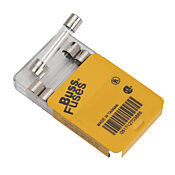Hello Everyone...
I need your help. My control panel is built (Yaaaa!) and I'm at the point of wiring it all together. I am going to include TVS diodes in my wiring scheme; but there appears to be 2 camps on where best to locate them.
I am using PW Lionel ZWs that feed MTH TIUs (I'm already planning on having circuit breakers between the ZWs and the TIUs).
Many model railroaders place the TVS diodes across the terminals on the transformers themselves; which in my case would between the ZWs and the circuit breakers that connect to the TIUs. Other model railroaders place them close to the track power connection points (I'm guessing with this approach the TVS diodes are attached to the output terminals of the TIU).
Does it really matter where? I would think the most important part is that they are included in the wiring scheme.
Thanks!




















